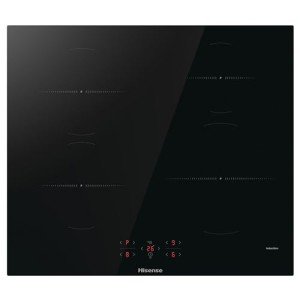Energy-Efficient Induction Hobs: A Comprehensive Guide
Induction hobs have actually become a popular cooking solution among modern households, praised for their speed, performance, and safety. As the world ends up being more mindful of energy intake and environmental sustainability, energy-efficient induction hobs are paving the way for cleaner and more effective cooking approaches. This post explores the workings, benefits, and factors to consider of induction hobs, supplying a useful guide for those seeking to make the switch.
What is an Induction Hob?
Induction hobs work on the principle of electromagnetic induction. Unlike traditional gas or electric hobs, which warm up the cooktop surface area, induction hobs generate heat directly in the cookware. This is achieved through electromagnetic fields that are created when an induction coil is energized. The benefits of this approach extend beyond effectiveness, as it likewise boosts safety and cooking performance.
Key Features of Induction Hobs
- Fast Cooking: Induction hobs considerably lower cooking time compared to conventional approaches. They can boil water practically twice as quick as electric hobs.
- Energy Efficiency: Approximately 90% of the heat created is transferred directly to the pots and pans, minimizing energy waste.
- Accurate Temperature Control: Users can manage heat levels with exceptional precision, which is especially beneficial for delicate jobs like simmering and melting.
- Cool Cooktop Surface: The cooktop remains relatively cool, reducing the danger of burns and making cleansing simpler.
- Security Features: Many induction hobs come equipped with automated shut-off functions, residual heat indicators, and child lock features.
Benefits of Energy-Efficient Induction Hobs
Energy-efficient induction hobs offer numerous advantages that line up with a sustainable lifestyle. Below are a number of key benefits:
| Benefit | Description |
|---|---|
| Lower Energy Bills | Consuming less energy equates to decrease utility costs. |
| Eco-friendly | Decreased energy usage contributes to decrease carbon emissions. |
| Boosted Cooking Experience | Quick meal preparation and exact control enhances culinary results. |
| More Secure Cooking Environment | Decreased threat of burns and fires due to cool cooktop surfaces. |
| Easy Maintenance | Smooth surfaces are simpler to clean and keep than traditional alternatives. |
Considerations When Choosing Induction Hobs
While the benefits of induction hobs are engaging, prospective buyers need to also think about a number of aspects before buying.
- Pots and pans Compatibility: Induction cooking needs magnetic cookware. Users need to guarantee their pots and pans work (cast iron and stainless steel are typically appropriate).
- Initial Cost: Induction hobs can be more costly in advance than standard cooking services. Nevertheless, the long-lasting savings on energy bills may offset this initial investment.
- Power Supply Needs: Some induction hobs require greater power supply configurations, which might include additional installation costs.
- Sound Levels: Some users might discover that induction hobs discharge a humming noise when in use, especially with certain types of cookware.
Selecting the Right Induction Hob
Buying an induction hob can be a substantial choice, and understanding the features and specifications can assist in making an educated option. Here are aspects to consider when picking the best induction hob:
Size
- Standard Sizes: Induction hobs come in different sizes, usually varying from 30 cm to 90 cm.
- Burners: Consider the number of cooking zones you require. Smaller hobs may have 2 or 3 burners, while bigger models frequently have four or more.
Features
- Touch Control: Modern induction hobs typically include touch-sensitive controls, offering a sleek and modern style.
- Smart Features: Some hobs feature wise innovation that integrates with home automation systems for remote control and tracking.
- Timer Functionality: This enables users to set cooking times, guaranteeing precision without needing continuous supervision.
Brand Name Reputation and Warranty
Selecting a reliable brand name that offers a solid warranty can be essential for long-term complete satisfaction. Research study customer reviews and ask about the maker's service policies.
Energy-efficient induction hobs represent a substantial advancement in cooking technology, marrying performance with sustainability. Induction Hob Features , precise controls, and security features make them an appealing alternative for any cooking area. While the initial expenses might be higher, the long-lasting benefits of energy savings and enhanced cooking experiences provide a compelling case for making the switch. As homes continue to seek methods to decrease their carbon footprint, induction hobs offer a practical, modern option.
Frequently asked questions
1. What pots and pans works with induction hobs?Induction hobs deal with magnetic materials. Pots and pans made from cast iron and specific types of stainless steel are ideal. Non-magnetic materials like aluminum or glass will not work.
2. Are induction hobs safe for children?Yes, induction hobs are usually thought about safe for children. The cooktop remains cool to the touch, and many models include safety locks to avoid unexpected operation.
3. Can I install an induction hob myself?It is recommended to employ a professional for installation, especially if your hob needs a higher power supply or complex electrical work.
4. Do induction hobs use a great deal of electricity?Induction hobs are understood for their energy performance; they normally utilize less electrical power compared to traditional electric or gas cooktops due to the fact that they transform almost 90% of the energy used straight into heat for cooking.
5. How do I clean up an induction hob?Cleaning up an induction hob is straightforward. Use a soft fabric or sponge with warm soapy water. Avoid abrasive cleaners which can scratch the surface area.

